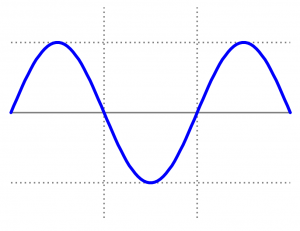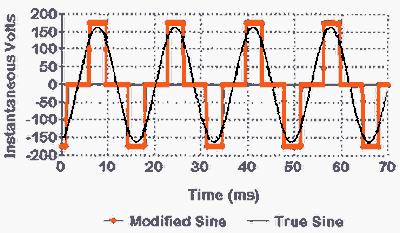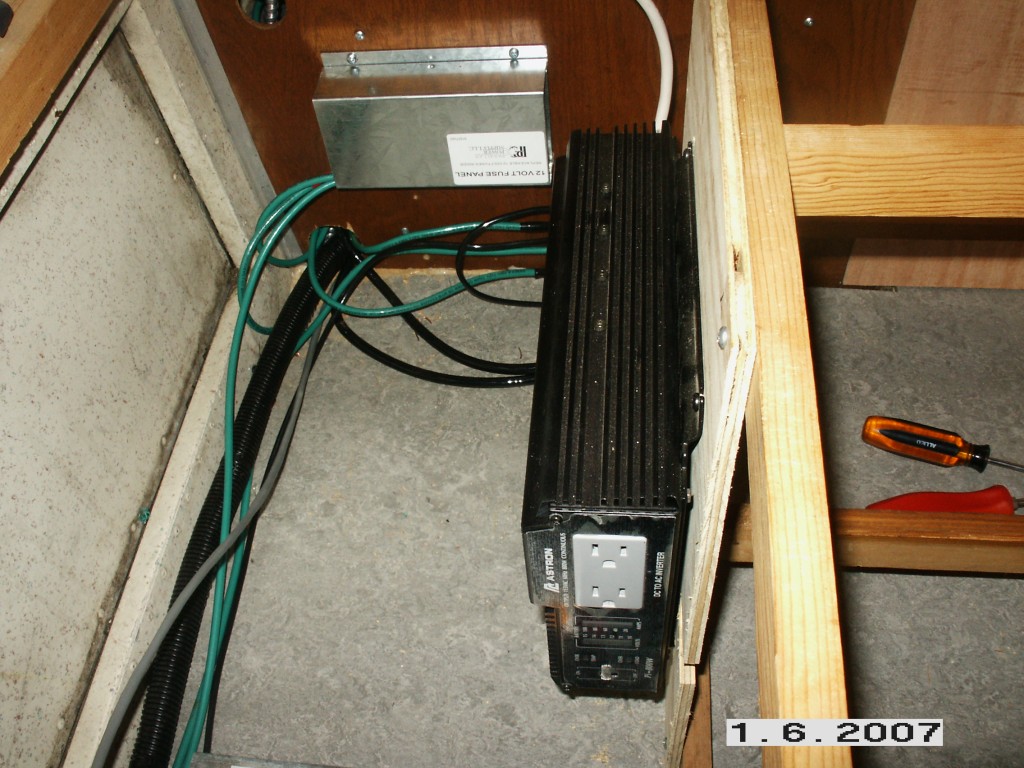What’s an inverter?
An inverter turns 12vdc battery power into 110vac capable of running devices that require household voltage. Household voltage, in the US, is 110v alternating current. Alternating current means the power alternates or changes between plus and minus. In the US it does it 60 times a second. The result is termed a sine wave, which is illustrated as a smooth transition between the two extremes.

Alternating Current Sine Wave Image from commons.wikimedia.org
When I restored my trailer seven years ago, I included a inverter that could power my LCD TV’s whenever we were without hook ups. We rarely boondock, actually we’ve only done it once, but it’s come in handy now and again.
Inverters use various design techniques to turn 12vdc into 110vac. Back when I bought my inverter the big technology at the time was termed Modified Sine Wave inverters. Before that, they were square wave inverters. Basically a rapid transition from positive to negative. This type of transition was terrible for equipment. The modified sine wave inverter added some filtering to the electronics to smooth out the edges of the square and simulate the pure rounded nature of household current.

Modified Sine Wave Image from highfields-arc.co.uk
Although improved over the square wave, the modified sine is still not ideal. It is ok for certain loads like motors and light bulbs. It may run other devices, but at less efficiency. Newer electronics use more sophisticated power supplies and rely more heavily on a pure sine wave.
Cost is the major issue going from modified sine wave inverters to pure sine. Modified sine inverters are relatively cheap when compared to pure sine inverters that require a lot more engineering the achieve correct wave pattern.
One caution to pay attention to is the really cheap modified sine inverters can actually be wired unsafe. Some of them put half the power out of the neutral line to trick the load into operating at full 110vac. This is an unsafe condition, especially if you try and wire it into your RV panel.
If you want to go with a modified sine wave inverter, go with a quality brand, and check that your loads will work properly on a inverter of this type.
Appliances like microwaves, may run on a modified sine inverter, if it’s large enough, but they run less efficient because of the poor sine wave. They run better on a pure sine inverter that truly mimics household power. In the end, they use less battery power to do it.
My old modified sine inverter ran my TV’s ok, but not much else. I really wanted to be able to run my microwave in addition to the TV’s. I also wanted to be able to use complex power supplies like those used in my macbook charger. So it was time to upgrade to a pure sine inverter. I decided on a model from GoPower!
GoPower! makes a line of pure sine inverters of various sizes including, 1500w , 2000w, and 3000w models.
Like anything else, you get what you pay for. Check out carefully before you buy. Some manufactures typically over-rate what their products can do.
In the next installment, I’ll talk about why I chose the inverter I did and some of it’s features.
Amazon link for the GP-SW2000-12 Inverter
Disclaimer: Although my inverter was sponsored by GoPower, the experience and opinions expressed here are my own.




